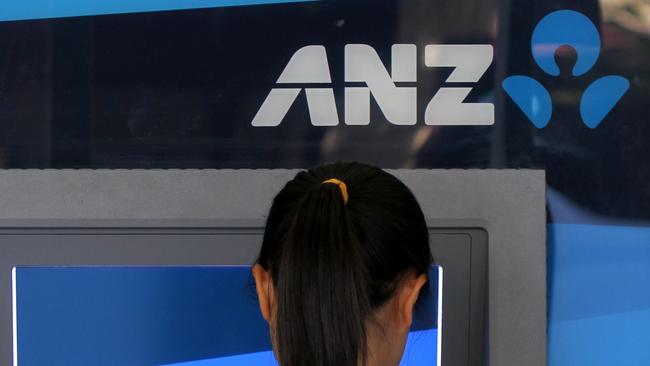Bank debt blowouts caught investors napping
Retail investors were looking the other way when hit by a bus last week, as shares in the big four banks fell.

Retail investors were looking the other way when they were hit by a bus on Thursday, as shares in Australia’s big four banks were walloped after ANZ said spoiling loans in the struggling resources sector would push its provision for lending losses for the half year to almost $1 billion, followed shortly by Westpac revealing it was being hit by similar problems.
ANZ’s stock price dropped 5.2 per cent, while Westpac plunged 4.6 per cent. The contagion spread to NAB shares, which retreated 3.5 per cent, and Commonwealth Bank, which fell 2.5 per cent.
But big institutional banks and short sellers were ahead of the game, having quietly sold down their holdings in the major Australian banks in the months leading up to the shock warning on lending provisions.
Internationally, the bears had been circling banks for months, pumping up investor concerns of the amount of bad debts to energy companies and emerging markets held by lenders.
The jitters culminated in a global sharemarket rout earlier this year led by a plunge in the world’s biggest banking stocks, pushing the MSCI World Index, which tracks major developed and emerging markets, into bear market territory in February.
However, the local sharemarket bottomed out in February and the major banks then staged a hefty recovery rally, surging around 13 per cent over the month of March against a broader market gain of only about 6 per cent.
The bank rally gathered pace, but analysts warned the cracks in the banks would soon lead to real structural damage.
Respected CLSA banking analyst Brian Johnson told clients after the bounce in February to sell down ANZ and CBA “into the rally”. He said Australian banks were “over-earning”, that they were “undercapitalised”, while funding costs “both wholesale and retail deposit rates seem to be still rising”, putting at risk generous dividend payouts.
Rather than cover their bets against the banks in light of March’s stunning bank rally, Deutsche Bank analyst Andrew Triggs pointed out that short positions in the banks rose to reach a seven-year high.
According to research, the money flowing into the banks during the rally was coming from retail shareholders, trying to catch the rollercoaster on its ascent, at the same time institutions and international investors were selling down their holdings and placing their short bets.
By the start of the week, the average short position in the big four banks was at 2 per cent, up from 1.4 per cent three months ago, and more than double the 0.8 per cent holding this time last year.
ANZ had the highest ratio of short sellers of the big four, at 2.5 per cent of all shares. Mr Johnson had gone in hard and early on ANZ, singling out the lender in early March as having “too many international shareholders, too much financial markets earnings, too much NZ dairy, not enough collective provisioning, too much resources exposure …”
Overseas, the bears had been warning of a bad debt blowout for some time. Deutsche Bank shares had lost two-thirds of their value by February on concerns of its loans to stressed oil and gas companies in emerging markets.
Last week, Macquarie analysts warned souring energy and mining loans were a threat to CBA and ANZ much more than their peers.
ANZ has the largest total institutional lending exposure, at some $95bn, while its peers have exposure in the mid-$50bn range. ANZ and CBA each have about $20bn in resource exposure, against $12bn to $15bn for NAB and Westpac.



To join the conversation, please log in. Don't have an account? Register
Join the conversation, you are commenting as Logout